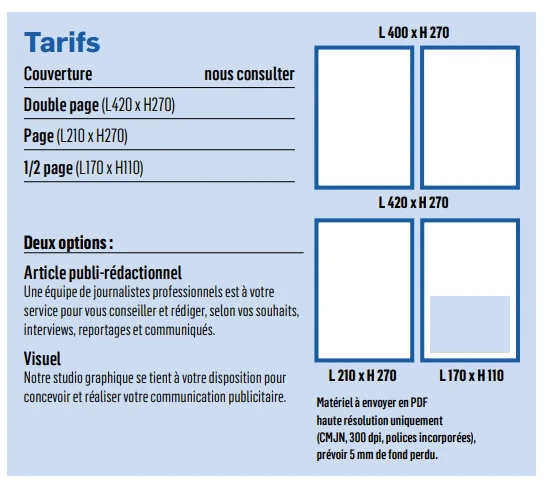
Interview with Jean-Jacques Bouya, Minister of State, Minister of Regional Planning, Infrastructure and Road Maintenance since May 15, 2021. He previously held the responsibilities of: Advisor on Transport and Equipment to the Head of State, General Delegate for Major Works, Minister at the Presidency of the Republic, responsible for Regional Planning and the General Delegation for Major Works and Minister of Planning, Regional Equipment and Major Works.
Regarding road maintenance and bridge construction, what projects are currently underway?
At the outset of my remarks, I would like to express my gratitude for the opportunity you have given me to discuss issues that directly affect my ministerial department. The Government of the Republic has always been concerned with infrastructure development with the aim of creating conditions conducive to inclusive economic diversification and the modernization of the country. The availability of efficient economic infrastructure is one of the essential prerequisites for the success of any action aimed at improving people's living conditions and reducing poverty. It is in this sense that the World Bank emphasized in 1994 that "infrastructure is the wheel of economic activity, and its failure in poor countries delays their economic takeoff." This is why, for more than two decades, the President of the Republic has been engaged in a vast program to provide the country with basic infrastructure. The major development projects carried out across the country and the accelerated rotating municipalization in the departments are part of this chapter.
Regarding road maintenance, we are carrying out, through the Road Fund, the maintenance and rehabilitation works of the following roads:
– Maintenance of the Tandou Youmbi-Tchizalamou-Bioko road (52 km), in the Kouilou department;
– Rehabilitation of the Komono-Yaya-Mossendjo road, Niari and Lekoumou departments;
– Maintenance of the Madingou-Carrefour Missala-Kimandou-Indo road, departments of Lékoumou and Bouenza;
– Maintenance of the Loudima Poste-Kitaka-Mont-Mbelo-Carrefour road. Kitaka-Ecole de la Sowapo, department of Lekoumou;
– Rehabilitation of the Ngamandzambala-Kindamba road (49 km), in Pool;
-Treatment of erosions in Kinkala, in the Pool;
-Treatment of the erosion of the Mpama, at PK27+300, Djambala-Lékana section, in the Plateaux;
– Rehabilitation of the Inkouelé-Otsini-Mbandza road and the Mapemé and Bomba slip roads, in the Plateaux;
– Rehabilitation of the Ottui-Koumou-Okiené road (43 km), in the Plateaux;
– Rehabilitation of the Ombelé-Okonda-Olingossayo-Mondzeli road and Olingossayo-Pamba-Boua slip road (38.6 km), in Cuvette;
– Rehabilitation of the Owando-Ollombo-Oyeké-Manga road (30 km), in Cuvette;
– Rehabilitation of the Issengué-Boya roads (22 km); Carrefour. Eboko-Carref. Aboua-Ongara-Mvoula-Itaniéré (17 km); Carrefour. Aboua-Village Ndoua (7 km), still in the Cuvette;
– Rehabilitation of the Ewo-Mbomo road, in Cuvette-Ouest;
– Rehabilitation of the Ngbala-Bolozo road, in Sangha;
-Treatment of compressible areas of the Enyellé-Dongou road, in Likouala.
In addition to these interventions, we are treating areas of deterioration on the RN2 and RN8 roads. The Djambala-Lékana road section, which is severely degraded, is the subject of a rigid structure experiment.
In the bridge sector, twelve bridges are under construction for some and under rehabilitation for others. In addition to these large bridges, there is the bridge over the Louwala River in Bouenza; the bridge over the Ngoko, in the Cuvette Ouest department; the bridge over the Louvila River in Niar; the bridge over the Mpoukou, over the Foula and Lissengué rivers, in Lékoumou; the bridge over the Ndouo River, in Pool; and the bridges over the Loko and Megné rivers, in the basin.
What are your priorities for regional planning?
In the Republic of Congo, land use planning is underpinned by Law No. 43-2014 of 10 October 2014 on the guidelines for land use planning and development. Due to the multi-sectoral and multi-stakeholder nature of land use planning, this law establishes consultation bodies on land use planning policy, which are intended to reach concerted decisions on land use planning. This is to ensure the consistency of human interventions at different levels. These bodies are:
– the National Council for Regional Planning and Development, chaired by the President of the Republic, Head of State, whose role is to set general guidelines for the development of the territory;
– the Interministerial Committee for Regional Planning and Development, chaired by the Prime Minister, Head of Government, whose role is to coordinate the development and implementation of sectoral policies, harmonize regional planning and equipment programs, and ensure the necessary arbitration;
– the Departmental and Municipal Land Use Planning Commissions, chaired by the Departmental Prefects, whose role is to ensure the coherence of land use development projects at the local level. To date, the government's priority is to:
– the operationalization of these consultation bodies, which are already in place; for example, the inaugural session of the permanent technical secretariat of the interministerial committee for regional planning and development, which marks the effective launch of the latter's activities, which was held from August 7 to 10, 2023;
– the development and/or updating of multi-sectoral spatial planning documents for activities (national land use plan (SNAT), departmental land use plans (SDAT), national land use plan (PNAT), land use code with a view to optimal development of the territory.
All these priority actions will find their answers with the imminent implementation of the sustainable land use program (PUDT), the result of the Letter of Intent signed in 2019 between Congo and the Central African Forest Initiative (CAFI).
You're a professional airplane pilot, and everyone knows your passion for scientific discovery. What's the status of the Brazzaville Aircraft Maintenance Center project?
The project to build the aircraft maintenance center is an old project that we have been working on for several years, within the framework of economic cooperation between the Republic of Congo and the People's Republic of China. An agreement was signed by the two states for the implementation of the project as a grant. The work will consist of the construction on an area of 85,095 m2:
– a maintenance hangar with an area of 4991.15 m2 capable of accommodating two aircraft;
– adjacent auxiliary buildings on the left flank and the rear part with an area of 7667.49 m2;
– a tarmac and an aircraft towing roadway with a footprint of 25 meters;
– parking areas that can accommodate 68 cars;
– technical premises, sentry boxes as well as exterior fittings, Roads and Various Networks (VRD).
The company and the controlling mission are already known. They are the builder China Road Bridge and Corporation and the consortium International Engineering Corporation (CRBC) and Beijing China Enterprise Construction and Development Supervision Consulting. You understand that this is an existing project and its execution is imminent.



















 A Seat That Transforms into a Bed
A Seat That Transforms into a Bed  In the world of air travel, economy class is often considered the most affordable option. However, at Air Afrika, we believe that affordability shouldn't mean compromising on quality of service. Our class
In the world of air travel, economy class is often considered the most affordable option. However, at Air Afrika, we believe that affordability shouldn't mean compromising on quality of service. Our class






